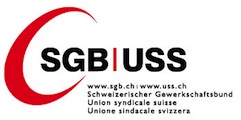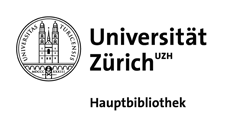Publications des institutions partenaires
Nikola Mirkov, Igor Pozdeev and Paul Söderlind: Toward Removal of the Swiss Franc Cap: Market Expectations and Verbal Interventions
We ask whether the markets expected the Swiss National Bank (SNB) to discontinue the 1.20 cap on the Swiss franc against the euro in January 2015. In the runup to the SNB announcement, neither options on the euro/Swiss franc nor FX liquidity indicated a significant shift in market expectations. Furthermore, we find that the SNB's verbal interventions during the period of cap...
Institution partenaire
English / 30/08/2016
Nikola Mirkov, Igor Pozdeev and Paul Söderlind: Toward Removal of the Swiss Franc Cap: Market Expectations and Verbal Interventions
We ask whether the markets expected the Swiss National Bank (SNB) to discontinue the 1.20 cap on the Swiss franc against the euro in January 2015. In the runup to the SNB announcement, neither options on the euro/Swiss franc nor FX liquidity indicated a significant shift in market expectations. Furthermore, we find that the SNB's verbal interventions during the period of cap...
Institution partenaire
English / 30/08/2016
Pinar Yesin: Capital Flows and the Swiss Franc
The Swiss franc is known to appreciate strongly during financial market turmoil, demonstrating its status as a typical safe haven currency. One possible mechanism behind this appreciation during times of global turmoil is assumed to be higher capital inflows to Switzerland. This paper attempts to find some empirical evidence for this presumption. The analysis reveals that capital...
Institution partenaire
English / 20/06/2016
Pinar Yesin: Capital Flows and the Swiss Franc
The Swiss franc is known to appreciate strongly during financial market turmoil, demonstrating its status as a typical safe haven currency. One possible mechanism behind this appreciation during times of global turmoil is assumed to be higher capital inflows to Switzerland. This paper attempts to find some empirical evidence for this presumption. The analysis reveals that capital...
Institution partenaire
English / 20/06/2016
Signe Krogstrup and Cédric Tille: On the roles of different foreign currencies in European bank lending
We draw on a new data set on the use of Swiss francs and other currencies by European banks to assess the patterns of foreign currency bank lending. We show that the patterns differ sharply across foreign currencies. The Swiss franc is used predominantly for lending to residents, especially households. It is sensitive to the interest rate differential, exchange rate developments,...
Institution partenaire
English / 18/05/2016
Signe Krogstrup and Cédric Tille: On the roles of different foreign currencies in European bank lending
We draw on a new data set on the use of Swiss francs and other currencies by European banks to assess the patterns of foreign currency bank lending. We show that the patterns differ sharply across foreign currencies. The Swiss franc is used predominantly for lending to residents, especially households. It is sensitive to the interest rate differential, exchange rate developments,...
Institution partenaire
English / 18/05/2016
Pascal Towbin and Sebastian Weber: Price expectations and the US housing boom
As it has proved difficult to explain the recent US house price boom on the basis of fundamentals, many observers have emphasised the role of speculation. This kind of argument is, however, indirect, as speculation is treated as a deviation from a benchmark. Our paper identifies house price expectation shocks directly, using a VAR with sign restrictions. House price expectation...
Institution partenaire
English / 27/04/2016
Raphael Anton Auer and Cédric Tille: The banking sector and the Swiss financial account during the financial and European debt crises
The US financial crisis and the later eurozone crisis have substantially impacted capital flows into and out of financial centers like Switzerland. We focus on the pattern of capital flows involving the Swiss banking industry. We first rely on balance-of-payment statistics and show that net banking inflows rose during the acute phases of the crises, albeit with a contrasting pattern...
Institution partenaire
English / 27/04/2016
Christian Hepenstrick and Massimiliano Marcellino: Forecasting with Large Unbalanced Datasets: The Mixed-Frequency Three-Pass Regression Filter
In this paper, we propose a modification of the three-pass regression filter (3PRF) to make it applicable to large mixed frequency datasets with ragged edges in a forecasting context. The resulting method, labeled MF-3PRF, is very simple but compares well to alternative mixed frequency factor estimation procedures in terms of theoretical properties, finite samle performance in Monte...
Institution partenaire
English / 27/04/2016
Alain Galli: How reliable are cointegration-based estimates for wealth effects on consumption? Evidence from Switzerland
According to economic theory, the intertemporal budget constraint of households implies that a permanent increase in wealth should have a positive effect on consumer spending. Given the comparatively strong increase in Swiss household wealth over the past few years, the question of the extent to which changes in wealth influence expenditures of households has become of special...
Institution partenaire
English / 27/04/2016
Pinar Yesin: Exchange Rate Predictability and State-of-the-Art Models
This paper empirically evaluates the predictive performance of the International Monetary Fund's (IMF) exchange rate assessments with respect to future exchange rate movements. The assessments of real trade-weighted exchange rates were conducted from 2006 to 2011, and were based on three state-of-the-art exchange rate models with a medium-term focus which were developed by the IMF....
Institution partenaire
English / 27/04/2016
Sandra Hanslin and Rolf Scheufele: Foreign PMIs: A reliable indicator for exports?
Foreign economic activity is a major determinant of export development. This paper presents an indicator for now- and forecasting exports, which is based on survey data that captures foreign economic perspectives. We construct an indicator by weighting foreign PMIs of main trading partners with their respective export shares. For two very trade exposed countries (Germany and...
Institution partenaire
English / 27/04/2016
Angelo Ranaldo and Enzo Rossi: Uniform-price auctions for Swiss government bonds: Origin and evolution
The Swiss Treasury has used the sealed-bid, uniform-price auction format for allocating government bonds since 1980. In this study, we examine the authorities' motivation for choosing the uniform-price auction. In addition, we describe how the institutional set-up evolved over time. It includes bidding requirements, class of bidders, pre-auction information, the bidding process, the...
Institution partenaire
English / 27/04/2016
Severin Bernhard: A real-time GDP data set for Switzerland
This economic study presents and analyses newly collected real-time data for Swiss GDP. It extends existing data sets by covering annual and quarterly aggregate GDP values for a longer sample, with vintages starting in 1971 (annual) and 1983 (quarterly). The analysis comprises a graphical and statistical description of quarterly GDP releases and tests for unbiasedness and efficiency...
Institution partenaire
English / 27/04/2016
Thomas Nellen: Collateralised liquidity, two-part tariff and settlement coordination
This paper analyses the liquidity management game played in payment systems with free but collateralised intraday credit facilities, under the assumption that settlement risk is the driving force. Settlement equilibria are found to depend on the combination of the intraday liquidity facilities' design and the collateral policy applied by the central bank. The effectiveness of a two-...
Institution partenaire
English / 27/04/2016
Jacob Gyntelberg, Mico Loretan and Tientip Subhanij: Private information, capital flows, and exchange rates
We demonstrate empirically that not all international capital flows influence exchange rates equally. Capital flows induced by foreign investors' transactions in local stock markets have an impact on exchange rates that is both economically significant and permanent, whereas capital flows induced by foreign investors' transactions in the local government bond market do not. We relate...
Institution partenaire
English / 27/04/2016
Philip Ulrich Sauré: Time-intensive R&D and unbalanced trade
This paper highlights a novel mechanism that generates global imbalances. It develops a general equilibrium trade model with one of two countries having a comparative advantage in a sector whose production is characterized by (i) rapid, anticipated demand growth and (ii) large up-front R&D costs. International funding of the accruing R&D costs generates capital inflows in the...
Institution partenaire
English / 27/04/2016
Nikola Mirkov and Andreas Steinhauer: Ben Bernanke vs. Janet Yellen: Exploring the (a)symmetry of individual and aggregate inflation expectations
We conducted a simple, anonymous survey at the beginning of 2014, asking around 200 economists worldwide to reveal their inflation expectations, conditional on either Ben Bernanke or Janet Yellen being the chair of the Board of Governors of the Federal Reserve. We use the change in the Fed's leadership to focus attention on the difference in conditional expectations, while we are...
Institution partenaire
English / 27/04/2016
Aleksander Berentsen, Sébastien Philippe Kraenzlin and Benjamin Müller: Exit Strategies and Trade Dynamics in Repo Markets
How can a central bank control interest rates in an environment with large excess reserves? In this paper, we develop a dynamic general equilibrium model of a secured money market and calibrate it to the Swiss franc repo market to study this question. The theoretical model allows us to identify the factors that determine demand and supply of central bank reserves, the money market...
Institution partenaire
English / 27/04/2016
Thomas Nitschka: Is there a too-big-to-fail discount in excess returns on German banks' stocks?
This paper shows that standard multifactor asset pricing models provide an adequate description of excess returns on stock indexes of German industrial sectors. The only exception is the banking sector index. It offers lower monthly excess returns than suggested by exposures to risk factors in the sample period from 1973 to 2014. This evidence is robust to various changes in the...
Institution partenaire
English / 27/04/2016
Pages
Le portail de l'information économique suisse
© 2016 Infonet Economy












